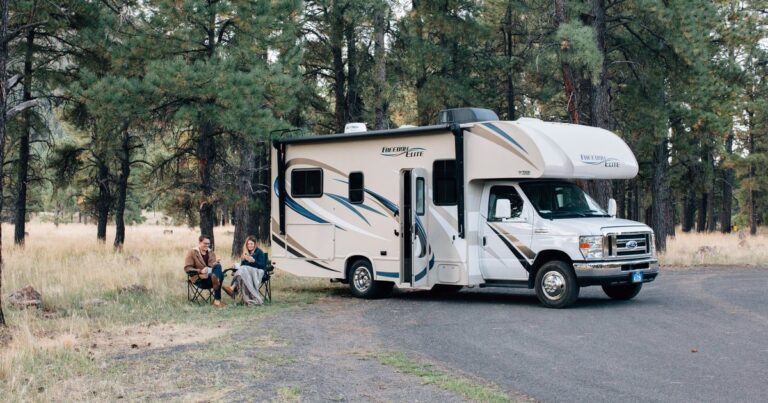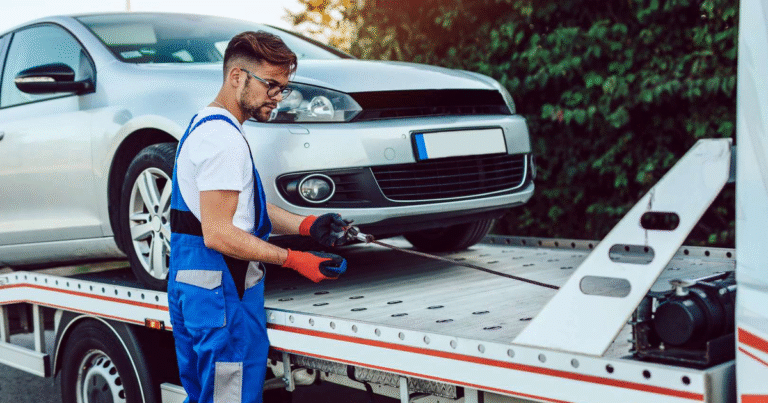Vehicle Insurance Overview: Everything You Need to Know
Vehicle insurance is more than just a legal requirement in many places. It is a financial safety net that protects drivers, passengers, and vehicles from the unexpected costs that come with accidents, theft, or other types of damage. Whether you drive a car, motorcycle, truck, or even a recreational vehicle, having the right coverage can save you from devastating expenses and give you peace of mind every time you hit the road.
In this complete guide, we will break down everything you need to know about vehicle insurance: how it works, the different types of coverage, factors that affect your premium, and tips for choosing the right policy.
What is Vehicle Insurance?
Vehicle insurance is a contract between you and an insurance company. In exchange for a regular payment called a premium, the insurer agrees to pay for certain types of losses, damages, or liabilities involving your vehicle. These can include repairing your car after an accident, covering medical expenses, or compensating others if you are responsible for injuries or damage.
The main goal of vehicle insurance is to transfer the financial risk of driving from you to the insurer. Instead of paying thousands of dollars out of pocket after a major accident, your insurance can step in and handle the costs up to the policy limits.
Why Vehicle Insurance is Essential
Many people see vehicle insurance as just another bill, but it is actually one of the most important financial tools you can have. Vehicles are expensive to repair or replace, and accidents can happen at any time. Insurance protects you from potentially catastrophic financial losses and provides peace of mind every time you get behind the wheel.
Legal Requirement in Most Places
In most countries and states, you cannot legally operate a motor vehicle without at least a minimum level of insurance. This requirement exists to ensure that if you cause an accident, there are funds available to cover damages to other people or their property. Driving without insurance can result in hefty fines, license suspension, or even legal action. Having the proper coverage keeps you compliant with the law and protects both you and other road users.
Protection Against Financial Loss
Accidents can be expensive. Without insurance, you could be responsible for paying repair or replacement costs for your own vehicle, medical expenses for yourself or others, and damages to other people’s property. Depending on the severity of the accident, these costs can easily reach tens of thousands of dollars. Vehicle insurance spreads that financial risk so that you are not left facing an overwhelming bill.
Peace of Mind
Driving comes with inherent risks, and accidents are unpredictable. Knowing that you have a financial backup plan allows you to drive with more confidence and less anxiety about what might go wrong. Insurance transforms a stressful situation into a manageable one, giving you the freedom to focus on driving safely rather than worrying about potential losses.
Coverage for More Than Just Accidents
Modern vehicle insurance often extends beyond collisions. Many policies include protection against theft, vandalism, fire, natural disasters, and even damage caused by uninsured drivers. This means that even if your vehicle is stolen from your driveway or damaged during a storm, you can rely on your insurance to cover the costs. Comprehensive protection ensures that you are covered in a wide range of scenarios.
Main Types of Vehicle Insurance Coverage
Not all vehicle insurance policies are created equal. The right policy depends on your vehicle, how you use it, and the level of protection you want. Here are the main types of coverage explained in detail.
Liability Coverage
Liability coverage is the backbone of most vehicle insurance policies. It pays for injuries and property damage you may cause to others in an accident. For example, if you accidentally hit another vehicle and damage it, liability insurance covers the repair or replacement cost. It does not, however, cover your own injuries or vehicle damage. Liability coverage is legally required in most areas and ensures you can handle costs without risking personal bankruptcy.
Collision Coverage
Collision coverage protects your own vehicle. If you collide with another car, a tree, or any object, this coverage pays for repairs or replacement regardless of who was at fault. For newer or high-value vehicles, collision insurance is particularly important because the cost to repair or replace the vehicle can be substantial.
Comprehensive Coverage
Comprehensive coverage protects against damage that is not caused by a collision. This includes theft, fire, vandalism, hail, flooding, and other natural disasters. For instance, if your car is damaged in a storm or stolen from your driveway, comprehensive coverage ensures you are not left paying out of pocket. This type of coverage is especially valuable in areas prone to severe weather or high crime.
Personal Injury Protection
Personal injury protection, or PIP, covers medical expenses for you and your passengers regardless of fault. Some policies also cover lost wages and other costs related to the accident, such as rehabilitation or therapy. PIP ensures that an injury does not translate into a financial crisis and helps you focus on recovery.
Uninsured and Underinsured Motorist Coverage
Even though most drivers carry insurance, not everyone does. If you are in an accident caused by a driver with no insurance or insufficient coverage, this protection ensures you can still receive compensation for your medical expenses and vehicle damage. It is an important safeguard for situations where the other party cannot pay for the damages.
Gap Insurance
Gap insurance is crucial if your vehicle is financed or leased. If your car is totaled, standard insurance pays only the current market value, which might be less than what you still owe on the loan or lease. Gap insurance covers the difference, preventing you from being stuck paying out of pocket for a car you no longer have.
Factors That Affect Your Vehicle Insurance Premium
Insurance premiums are calculated based on risk. Several factors influence how much you pay and understanding them helps you make smarter decisions.
-
Driving Record: A clean driving history with no accidents or violations typically results in lower premiums. Conversely, traffic tickets, DUIs, and prior accidents increase risk and raise your rates.
-
Type of Vehicle: Expensive cars, high-performance vehicles, or those with high theft rates cost more to insure because repairs and replacements are more costly.
-
Location: Insurance rates vary depending on where you live. Areas with heavy traffic, frequent accidents, or higher crime levels generally have higher premiums.
-
Age and Experience: Younger and less experienced drivers are statistically more likely to be involved in accidents, so they usually pay more for coverage.
-
Coverage Level and Deductibles: Higher coverage limits provide more protection but increase your premium. A higher deductible reduces monthly payments but means paying more if you file a claim.
-
Credit History: In some regions, insurers consider credit scores, assuming that drivers with better credit are more financially responsible and lower risk.
Tips for Choosing the Right Vehicle Insurance
Finding the right policy is about balancing cost and coverage. Consider these steps to make an informed choice:
-
Assess Your Needs: Think about your driving habits, vehicle value, and budget. Older vehicles might not need comprehensive or collision coverage, which can save money.
-
Compare Multiple Quotes: Rates can vary significantly between insurers. Comparing at least three quotes ensures you get the best combination of price and coverage.
-
Check the Insurer’s Reputation: Look for reviews, financial ratings, and customer service records. A smooth claims process and reliable support can make a huge difference when you need help.
-
Look for Discounts: Insurers offer discounts for safe driving, bundling policies, installing safety devices, and for students with good grades. These savings can significantly reduce premiums.
-
Review Your Policy Regularly: Life changes such as moving, getting married, or buying a new car affect your insurance needs. Regular reviews help you stay properly covered without paying for unnecessary extras.
Common Mistakes to Avoid When Buying Vehicle Insurance
Even careful drivers make mistakes that can lead to higher costs or underinsurance. Avoid these common errors:
-
Buying Only Minimum Coverage: This keeps you legal but may leave you underprotected in a serious accident.
-
Not Understanding Your Deductible: If your deductible is too high, you may struggle to pay it in a claim.
-
Failing to Provide Accurate Information: Incomplete or false information can result in denied claims.
-
Not Updating Your Policy: Adding a new driver, moving to a new location, or changing your vehicle requires updating your coverage to ensure proper protection.
How to Save Money on Vehicle Insurance
You can manage costs without sacrificing coverage through practical strategies:
-
Maintain a clean driving record by obeying traffic rules and avoiding accidents.
-
Take a defensive driving course, which many insurers reward with discounts.
-
Bundle vehicle insurance with home or renter’s insurance to take advantage of multi-policy discounts.
-
Install anti-theft devices to reduce risk and qualify for savings.
-
Pay your premiums annually rather than monthly to avoid extra fees.
-
Shop around at each renewal period to make sure you are getting the best price.
The Future of Vehicle Insurance
The vehicle insurance industry is evolving rapidly with technology. Telematics, for example, allows insurers to track driving behavior using devices or apps, offering personalized premiums based on how safely you drive. Electric vehicles, autonomous driving technology, and shared mobility services are also shaping new types of coverage.
Conclusion
Vehicle insurance is not just a box to check for legal compliance. It is a financial tool that can protect you from potentially life-changing expenses. Understanding the different coverage types, knowing what affects your premium, and making informed choices can help you get the best protection at a reasonable price. By taking the time to compare policies and avoid common mistakes, you can drive with confidence, knowing that you have a safety net in place.






